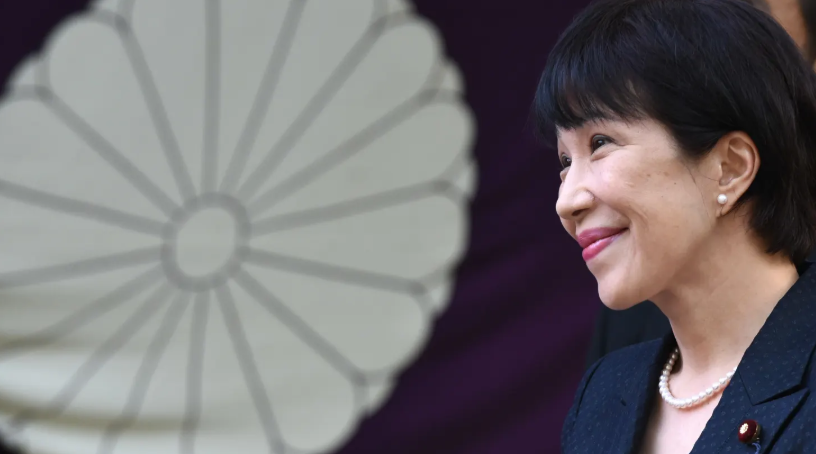Having won the presidency of Japan’s ruling Liberal Democratic Party, Sanae Takaichi is on the verge of becoming the country’s first female prime minister.
Takaichi, a hardline conservative and close ally of the late Shinzo Abe, said Saturday that she would “work, work, work” to turn “people’s anxieties about their daily lives and the future into hope.”
Her rise comes at a time of economic strain at home and tense relations abroad — and tests whether Japan doubles down on the conservative, pro-Abenomics agenda that defined the past decade.
Takaichi’s victory follows Prime Minister Shigeru Ishiba’s resignation after the LDP lost its majority in both houses of parliament in 2024 and 2025, leaving it to govern as a minority.
This also means that when the Diet convenes on Oct 15, opposition parties could theoretically block Takaichi’s confirmation as prime minister, although analysts say the risk of that is low.
Takaichi’s first task is to secure the support of at least one opposition party to form a working majority, research firm BMI said in a note Monday.
However, opposition parties face a dilemma: joining the LDP in a coalition could increase their influence but risk alienating voters dissatisfied with the ruling party.
Should Takaichi reach a deal with the opposition, BMI said her government will face several challenges, including a cost-of-living crisis, managing security and trade relationships with U.S. President Donald Trump, as well as addressing domestic concerns about the rising number of foreigners residing in or visiting Japan.
Takaichi is seen as a proponent of “Abenomics,” the economic strategy of Shinzo Abe, which espoused loose monetary policy, fiscal spending and structural reforms.
She had previously criticized the Bank of Japan’s plan to raise interest rates, which BOJ Governor Kazuo Ueda previously said on Friday that the central bank would set rates “without any preconceptions.”
The BOJ ended its negative interest rate regime in March 2024 and most recently kept rates at 0.5%.
“We can already guess that she won’t bring inflation down, because if she’s going to double down on Abenomics of the past, which means a sharply weaker yen, which means more government spending, that arguably means more inflation,” said William Pesek, the author of Japanization: What the World Can Learn from Japan’s Lost Decades.
“She was probably the best option to face off with Trump at this very tense moment between Trump and the rest of the world,” Pesek said.
Last week, Takaichi reportedly expressed misgivings about the U.S.-Japan trade deal, and said on a Fuji TV program that a “do-over” of the agreement was not off the table, referencing Japan’s $550 billion investment pledge.


